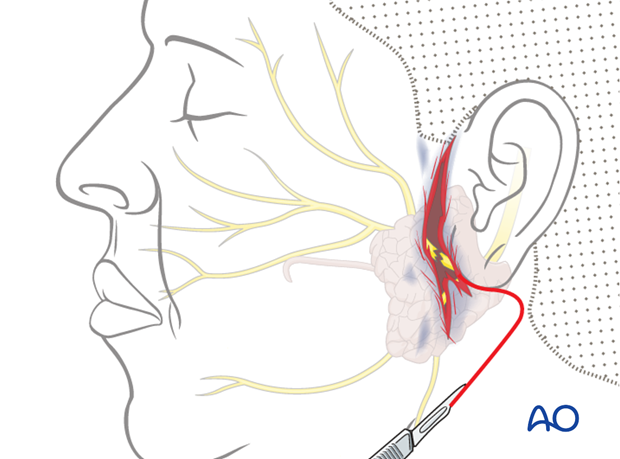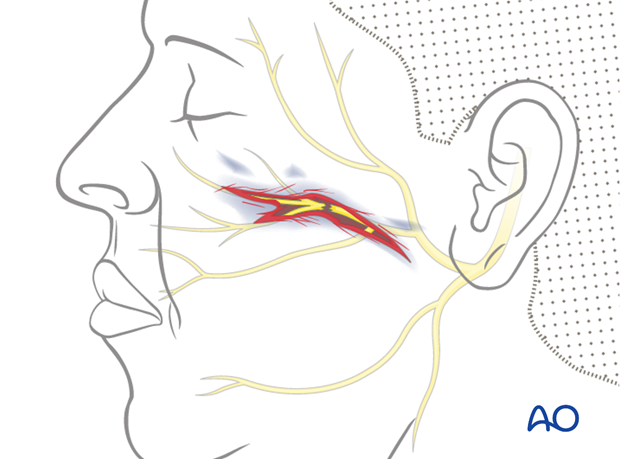The use of existing lacerations
1. Principles
Frequently, patients with facial trauma also have lacerations. Very often, these existing soft-tissue injuries can be used to directly access the facial structures for management of the trauma.
The surgeon may elect to extend the laceration to provide adequate access to the injured area, following the relaxed skin tension lines (RSTL).
Bacterial contamination is not a contraindication for the use of existing lacerations for surgical approach.

Nerve localization and exposure
Depending on the location of the laceration, different neurovascular structures may be affected by the injury.
In the illustrated case, the facial nerve is directly involved.
Proximal and distal branches of the facial nerve are exposed and identified based on specific anatomy and site of reconstruction, as described in the respective treatment section.

2. Wound closure
Wound closure for this incision is primary closure of the laceration. Proper cleansing, debridement, and hemostasis should be accomplished prior to closure.
The laceration is closed in layers with short-term resorbable interrupted sutures, realigning the anatomic structures and eliminating dead space.












